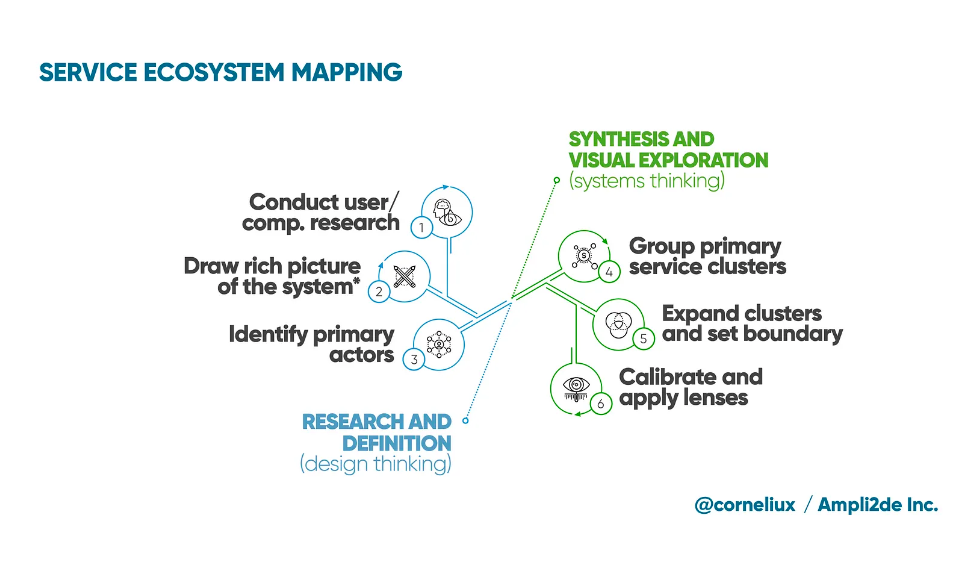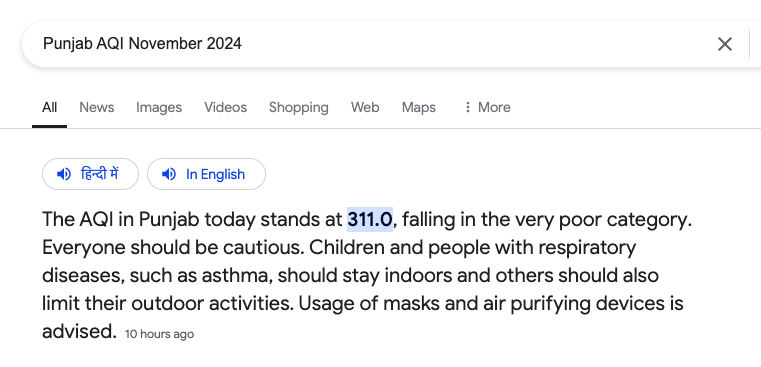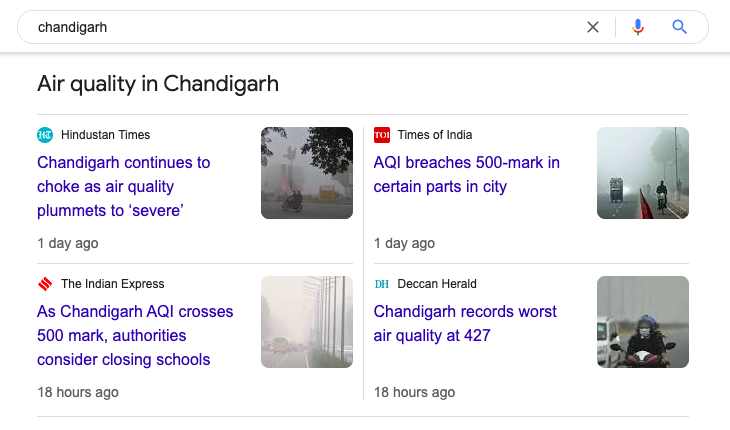The goals of user research are primarily tied to identifying the user’s needs, goals, and their usability and interactions’ behavior and patterns. Organizations use the research findings to drive meaningful insights so that the product teams can design and ship with the right product for the users’ context, and on evidence.
What if we find ways to make the research more holistic—where we design it in such a way that the research serves the organization’s key concerns and its holistic goals, at the system level? For example, whether the org’s primary concern is growth or stability? Is it about expansion to new locations, or compliance? Is it finding ways to survive in a new stream of competition?
Many teams see the research findings as a hammer—and they see nails everywhere. They are in the Now-We-Know zone because they have the evidence now. This Now-We-Know zone feels good because now they know:
- Users’ information consumptions patterns
- Users’ interactions behavior and patterns if any
- Users’ decision models–where do their motivations and incentives intersect
- What success means to them in their own natural language
Because they have the numbers to drive their product strategy:
- 4 out of 10 users ended up ordering the food in the wrong category because the tag for allergies was not clear.
- 3 out of 8 riders could not call the cab driver quickly enough to confirm their ride booking.
- 6 out of 10 users were not sure if they should change the email address in their CRM account
- 9 out of 14 event participants could not know the event time in their own timezone.
Get system thinking on either side of the user research strategy and the research goals
System thinking is about the wholeness of the organization—whether applied or even planned to apply, model, or practice—the collective and the unified vision, mission, the shared commitment to the goals in a common language, by building the right confidence and right communication system (not the design system), at the right time. Applying system thinking at any level in an organization begins at the interconnectedness of its sub-systems, functions, and units, teams, and the information flow models.
Imagine if the research strategy could have been aligned to build or strengthen the foundation of the system. For example, if there were a way to see how the roadmap from the research findings to the product strategy intersect with the system or address the system concerns. One of the ways to build these bridges is to use Causal Loop Diagrams (CLDs), here is an example (source).
System thinking makes sure that even if the research findings look like an elephant, the organization knows that dividing that an elephant in half does not produce two elephants (The Fifth Discipline, by Peter Senge P65).
In addition to identifying how the users might use the product to find value, the research team can plan the research to understand how the users’ mental models, their information finding and content consumption patterns, their present needs and their possible-future needs or goals might align with the systems-centric vision of the organization—at present and in the long run.
For example:
- While asking users on their cab booking interactions experience, what if you could gain some information about what they think if the org promotes second career drivers only, OR, drivers who are refugees, or drivers of a specific gender, or drivers from war veterans only?
- If an organization is planning to close their operations in one specific location in Croatia because it negatively impacts the local fishing industry, would the customers change their opinion about using the product in a certain way—could be for any reason.
- How will my travel plans in April or May impact the environment there in that specific region—the local businesses and the tourism industry might not welcome it much
- If I buy a CRM from a company in South Africa, how it might have an positive influence of the local economy there, for employment and business economy in general
Research becomes an even more powerful tool because it speaks to the users for something beyond the product or metrics. The system thinking centric approach first guides the research strategy itself—we find new ways and a new lens to see the North Star and the brand message somewhere in the research findings. In addition, it prepares us to map the research for scale—how we might scale our current understanding of the product, organization, and the system, in the future.
For example, as Jamshid Gharajedaghi says in their book System Thinking: Manage Chaos and Complexity (P62):”If I make $10 a week, I may eat one hamburger; with $20 I may have two; and with $30 I will try three. However, if I make $1,000 a week, I will not eat 100 hamburgers. I may not eat hamburgers at all. Therefore, a quantitative change in my income at some point has produced a qualitative change in my way of life.“
How the quantitative insights from user research can bring a qualitative healthy change in the system—that is the goal.
Cornelius Rachieru of CanUX (see their LinkedIn) talks about system thinking and design’s intersection, as Service Ecosystem Mapping.

“Its purpose is to facilitate understanding, at scale, by visualizing of the relevant actors and services within an ecosystem’s boundary, superimposed by various ‘lenses’ or data layers that may inform the problem that we’re trying to solve.” says Cornelius.
Baking system thinking on either side of the user research calls for developing a learning culture in the organizations—Peter Senge mentions it in their book, The Fifth Discipline (Amazon).
Many products in the world die because of the lack of conversations among the teams. If only the leaders can build the right dialogues and foster communication at the right time—how to broaden the research lens for a system thinking view, and how to map those findings and insights to bake the gains in the systems foundations. It certainly has something to do with how an organization designs its incentives system. Right incentives that are designed around teams’ learnability and curiosity at the system level can serves well for the overall health of the organization, for a much longer run.
How the research findings can help us find ways to strengthen the systematic foundations of the organization—for example the research may show that we need to invest in a more mature design operations teams, or in a fairly solid content supply chain for the customer experience, or we need to strengthen the interconnectedness between product and marketing because there lies the customers’ key success criteria.
Example 1: The Air Quality Index (AQI) concerns in Punjab
There are always the AQI concerns in Punjab in October and November every year. I searched about it while reading this post today and this is what I see.


This is an alarming situation which poses massive health risks to the people in Northern states in India—mostly in and around Punjab and Haryana. Many of my friends and relatives in the region are struggling to move out of their houses. As of today, Times of India says—7,621 cases have been reported in the state till Nov 13 in the ongoing season, while during the corresponding period in 2022 and 2023, 45,319 and 26,341 cases were detected, respectively (story).
In the last couple of years, I saw stories of how startups are trying to address the issue. Many of them are closed now within two or three years because they made the technology investment which serves only one end of this complex problem. Stubble burning and farm fires in Punjab are the system problems that organizations cannot solve only with technology investments. It will be interesting to see how the startups such as Takachar address it if they do not see it in the system thinking lens.
Example 2: Cricket season in West Indies
Ever since I can remember in the 1980s, the home season for West Indies cricket started in February or March and they would host teams till June. They won the World Cup in 1975 and in 1979, and their dominance in world cricket in the 1980s and 1980s meant a steady cricket calendar in the home season.
When those groups of islands know that thousands of international fans from England, Australia, and other countries might travel to support the touring teams during those months, every year, it helps their business, the tourism, the local industry whether it is fishing, camping, and whatever activities they are involved in. To host sports fans for a few weeks or months brings system dynamics into play—for the overall economy of the region, and the ecological cycle there.
Now after the growth of the Indian Premier League (IPL) since 2008, the international teams did not see enough financial viability in visiting the West Indies during those months and their administrators felt the heat—but there were no easy answers.
Slowly, they started involving teams in July and even August for short tours. This combined with the decline of the West Indies cricket team as a playing team did not show positive signs—the interest was declining. This year in 2024, England is playing cricket in the West Indies in November—a first that I have seen.
Imagine how it might impact their locals for the kind of adjustments they will make to run their businesses for the tourists—the fans who travel with the teams. We can sense that this might result in some form of major or even a catastrophic impact in the future, somewhere either in the food chain, in the food production life cycle, or in the supply chain in their fishing or mining industries, or in other transactional cycles that we cannot imagine as of now.
If they did some research on the viability of inviting the England cricket team in November, I am sure it was more of a financial viability and a cricket sustainability goal to support their cricket calendar and which is a fair point. However, a broader lens to see how it might impact the region at the systematic level might have shown them a different view. Since it is just happening in the year 2024, we do not have stories of its impact but they might see it in a few years.
Many organizations use system thinking to broaden their horizon of the intersection of market, operations, and the opportunity but they do not build the capabilities for mess-cleaning. John Cutler explains it in their latest LinkedIn post.
Building the systems view capacity
In a lot of ways, every organization faces common challenges—only the scale or the complexities within their specific use cases change. Whether they are designing a ride sharing app, or an ecommerce, or a group coaching service, the fundamental challenges are the same and the cycle to address the issues when they grow bring very similar challenges—scaling the operations for marketing and growing, people, technology, business processes, and raising funds. How a group campaigns for forests inventory (CollectiveCrunch is doing it), or ocean cleaning, or modern times’ urban planning (Demos Helsinki is doing something here) might bring their own unique challenges but most of them will have similar concerns at some stage when they grow. When they combine system thinking to inform the research strategy, it helps them have a closer and more accurate picture of what they need to do, for example:
- Capacity: Talent (user research might call for technology shift)
- Capacity: Risk (research might point to increased competition in the market)
- Org redesign: Need a new team for legal and compliance, or a domain consultant
- Policy: Do they need to rethink their policy
System thinking is not a framework that you can adopt into your process. It begins with your belief system, and in fact many organizations share a common belief system. They just need to have the right people with the right understanding of the shared vision for how the systems-driven feedback loop for the information flow works between their environment, their beliefs, and their actions, and for the defined standards.
These beliefs build our capacity and the confidence for what kind of investments we want to make in our work.
User research is a means towards building that systems capacity and interestingly, our beliefs guide the research itself and the research findings strengthen the beliefs—this is the most beautiful part of how system thinking and user research support each other.
Organizations should build this capacity to set up this support.
There is often an argument that system thinking makes the product processes slow. Well, if you think that the bus is moving slowly, it is not the bus that is slow.
For the organizations that are already doing it, I encourage their teams to share their stories and experiences so that the industry can have the right references to learn from.
Useful readings:
- Ha Phan’s latest post calls design as a research activity (see the post)
- Tools for system mapping (link)
